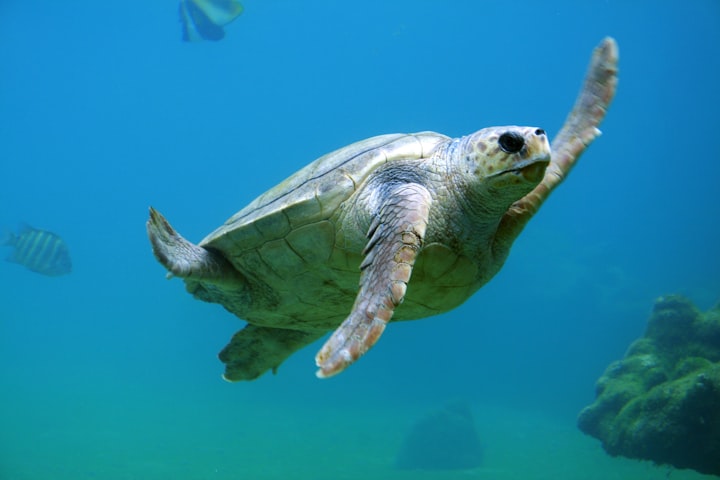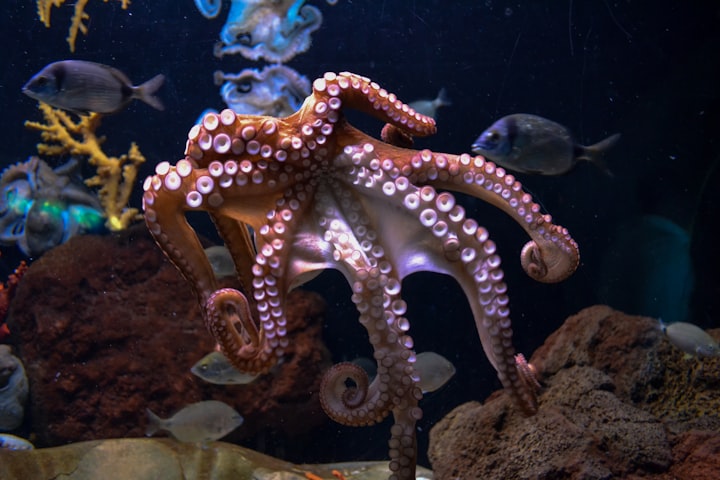6 Interesting facts about Sea Turtle Biology
& why sea turtles are at risk

Sea turtles have been in our oceans for over 100 million years. They are fantastic navigators; they swim great distances between feeding and nesting grounds. They are elegant, beautiful, and adapted perfectly to live in the oceans.
Aside from the cuteness and charm that comes with sea turtles, their biology has some fascinating quirks to it, some good, some bad. Yet their biology helps conservationists and scientists better conserve these species, and they could use the help.
1) Turtles don't have teeth
Instead of teeth, they have beaks. Some species like the green turtle have serrated ridges on the inside of their beaks which ‘act’ like teeth, but they’re not. This is what leads to some confusion on the ‘turtle teeth or beak debate’.

2) The turtle shell
The turtle's shell is made from around 50 bones that are fused, acting as 'one' bone, the shell. Interestingly, the shell is an exoskeleton, meaning a turtles skeleton is on the outside as opposed to the inside (like us).
3) Turtle ‘Lost years’
The lost years refer to the first few years of a turtle's life that scientists don't know much about. So from the moment they hatch and enter the ocean, they're deemed as lost. What occurs during the first few years of a baby sea turtles life is a mystery, as it's challenging to track and study baby sea turtles as they are just so tiny and get dragged by currents to faraway places.

4) Variation in size
There are only seven sea turtle species, the smallest being the Kemp’s ridley turtle which is around 70cm long and weighs up to about 40kg. The largest amongst them is the leatherback turtle, which can reach sizes up to 180cm and weigh 500kg.
5) Survival rate
Estimations are that 1 in 1,000 marine turtle eggs survive to adulthood. This is mainly due to predation, but littered beaches are increasingly becoming an extra obstacle baby turtles have to overcome when sprinting to the ocean after hatching.
6) Navigation & memory
Sea turtles are sensitive to the Earth's magnetic fields, which allows for accurate long-distance travel as they just follow the ‘lines’. This ability, coupled with their distinct memory, allows females to return to the same beach they hatched on, to nest.

So why are they endangered?
There are several reasons, and sadly many of them lead back to humans. For the past 200 years, turtles have been slaughtered for their eggs, meat, skin, and shells. They've also been hunted for sport in some cases and are increasingly being accidentally caught in nets intended for other species (bycatch).
Over exploration has led to severe declines in populations and contributes significantly to the declining biomass of sea turtles, especially when you consider that 6 out of 7 sea turtles species are endangered.
Habitat destruction is also affecting sea turtles. Coastal areas and beaches that turtles use to nest are being increasingly built upon for tourism. Seagrass meadows used to feed on are being ripped up to make way for coastal development.
Lastly, Climate change brought on by human activities affects turtle nesting sites physically by making things inaccessible to turtles. Rising temperatures also alters sand temperatures which in extreme cases can have devasting effects on populations.
Like crocodiles, sea turtles' embryo sex depends on temperature, and instability in temperature can wreak havoc on a population. When temperature affects the sex of hatchlings, its long term effects are seen in population dynamics (number of females to males). Imbalances in this ratio can significantly reduce a viable breeding population of an already at-risk species.
Nearly all species of sea turtles are now classified as endangered, with three of the seven being classed as critically endangered.
About the Creator
Bradley Knight
Grown on the British Isles, exploring beyond.
Marine Ecologist by trade, Scientific Illustrator and Communicator by hobby.






Comments
There are no comments for this story
Be the first to respond and start the conversation.